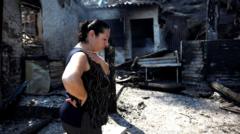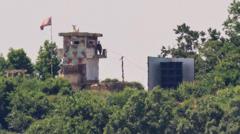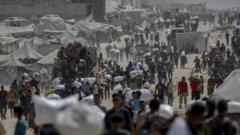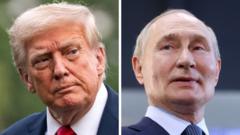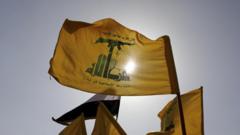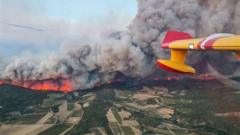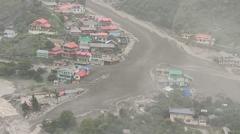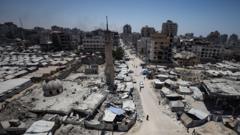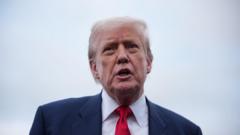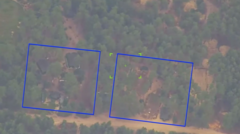**Understanding the significance of Al Udeid Air Base amid rising tensions.**
**Al Udeid Air Base: A Fortified Hub for U.S. Military Operations in Qatar**

**Al Udeid Air Base: A Fortified Hub for U.S. Military Operations in Qatar**
**Latest developments on the key Middle Eastern base following missile attacks.**
The Al Udeid Air Base in Qatar, home to approximately 10,000 U.S. troops, has recently drawn international attention after being targeted by Iranian missiles on June 23, 2025. As the largest U.S. base in the Middle East and the main headquarters for the U.S. Central Command, Al Udeid plays a pivotal role in regional military strategy and operations.
Established in the wake of the September 11 attacks, the base has evolved from its initial purpose to support operations in Afghanistan to becoming a coordination center for various military missions spanning Iraq, Afghanistan, and Syria. Over the years, U.S. military forces have deployed an impressive array of aircraft to the base, enhancing air power and operational capabilities across a broad region that includes 21 countries.
Additionally, Al Udeid served as a vital evacuation hub during the chaotic withdrawal of U.S. troops from Afghanistan in 2021, facilitating the departure of thousands of Afghans and American nationals. Qatar has invested heavily in the development of the base, spending at least $8 billion to ensure it meets the needs of both its military and the American forces operating within.
The strategic significance of Al Udeid extends beyond air power; it also hosts command facilities for special operations forces, demonstrating an increasing partnership between the U.S. and Qatar. Notably, the base's fortified defenses have been designed to handle potential threats, further emphasizing its importance to U.S. military operations in the region.
In a recent visit to Al Udeid, former President Donald Trump highlighted the U.S.-Qatar relationship, drawing attention to military cooperation and logistical support. The base, once shrouded in secrecy, now stands as a key element in a complex geopolitical landscape, showcasing the U.S.'s commitment to maintaining stability in the Middle East.
As tensions in the region continue to escalate, the role of Al Udeid Air Base will likely remain crucial to U.S. military strategy and operations, reflecting broader dynamics in foreign relations and security policy.
Established in the wake of the September 11 attacks, the base has evolved from its initial purpose to support operations in Afghanistan to becoming a coordination center for various military missions spanning Iraq, Afghanistan, and Syria. Over the years, U.S. military forces have deployed an impressive array of aircraft to the base, enhancing air power and operational capabilities across a broad region that includes 21 countries.
Additionally, Al Udeid served as a vital evacuation hub during the chaotic withdrawal of U.S. troops from Afghanistan in 2021, facilitating the departure of thousands of Afghans and American nationals. Qatar has invested heavily in the development of the base, spending at least $8 billion to ensure it meets the needs of both its military and the American forces operating within.
The strategic significance of Al Udeid extends beyond air power; it also hosts command facilities for special operations forces, demonstrating an increasing partnership between the U.S. and Qatar. Notably, the base's fortified defenses have been designed to handle potential threats, further emphasizing its importance to U.S. military operations in the region.
In a recent visit to Al Udeid, former President Donald Trump highlighted the U.S.-Qatar relationship, drawing attention to military cooperation and logistical support. The base, once shrouded in secrecy, now stands as a key element in a complex geopolitical landscape, showcasing the U.S.'s commitment to maintaining stability in the Middle East.
As tensions in the region continue to escalate, the role of Al Udeid Air Base will likely remain crucial to U.S. military strategy and operations, reflecting broader dynamics in foreign relations and security policy.


